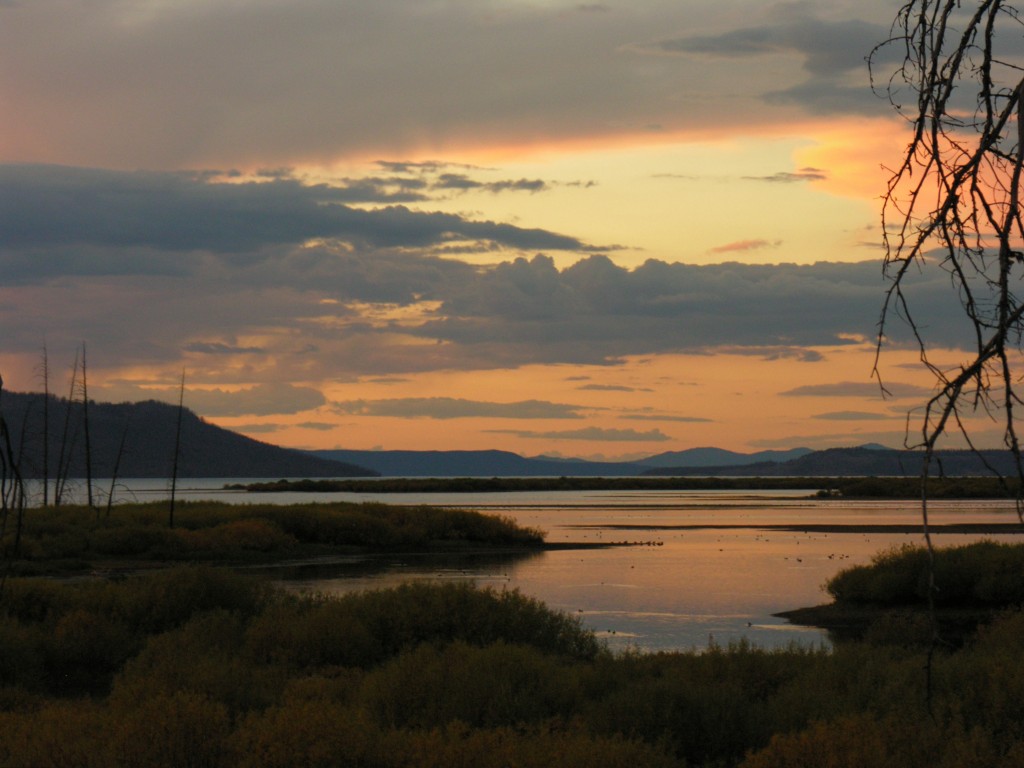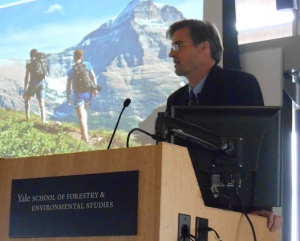
In his 1995 essay “The Trouble with Wilderness,” environmental historian William Cronon denounces the celebration of natural spaces deemed untouched and unspoiled. He argues that so-called “wildernesses” are fundamentally human creations that only serve to divide people from the natural world, and thereby undermine true, holistic conservation.
Cronon’s essay begins, “The time has come to rethink wilderness.” Jamie Williams is a man who has.
Williams, an alumnus of Yale College and the Yale School of Forestry and Environmental Studies, worked at The Nature Conservancy for 19 years before becoming President of The Wilderness Society last March. During a recent visit to FES, Mr. Williams repeatedly emphasized being proactive, persistent and reasonable in the approach to integrated large landscape conservation. His is not the exclusionary concept of wilderness that Cronon once criticized, but rather a patchwork of interconnected systems and processes, in which both people and preserved natural spaces play important, co-dependent parts.
Sage sat down with Williams at the end of his visit to ask a few more questions.
Sage: The idea of a large landscape approach [to conservation] resonates both with me personally and with the philosophy here at the Yale School of Forestry. What are some challenges to balancing all the different components and perspectives of large landscape conservation?
Jamie Williams: We have to work out all these solutions at the landscape scale with a coalition of diverse interests. The science is really important –– where to protect from a biological standpoint, what are the effects of different management [regimes] on the land –– but ultimately these decisions are always political decisions. We have to use the best available science to inform policy for managing land. There’s no right answer, but ultimately what we are trying to do, when we see big threats that are irreversible, is to find creative and collaborative ways to protect that land.
You work with stakeholders with different needs and levels of urgency. When do you have enough information to make decisions?

You need good science, you need good information, but at the end of the day you’re almost never going to have certainty. So the question is, when do you have enough information to make an informed decision? Often you have to recognize that not making any decision can be worse. The consequences of inaction can often be much worse than the consequences of action on imperfect information when it comes to preserving important natural resources.
From your talks today I wrote the following notes: “Be positive, be proactive, be reasonable.” Would you say that sums up your approach? Is there anything missing?
People have different needs for this shared resource we have, our public lands, and everyone’s viewpoint is legitimate. Ultimately we have to find solutions for sustaining important places that meet different interests, and the only way to do that is to be reasonable, to be practical and to be solutions-focused. Then you can get a lot done. But I think if we remain too pure, too ideological, then it all might sound good, but in the real world you may not get much done. Meanwhile the threats to wild lands continue to mount.
I would also add, “Be persistent,” because the best victories often take the longest to achieve. The Wilderness Act itself took eight, almost nine years from when the first draft was written to ultimately getting passed. Many land protection efforts take a long time, but persistence pays off.
You talked today about the spiritual aspect of being in nature and its ability to make us feel humble. How much of the American public do think you is aware of this ability? How do you teach about, or promote, such an intangible?
A wilderness experience means something different for everybody –– it’s very personal –– but we know that it can be transformational. What we can do is really celebrate what being outdoors means –– not just getting outdoors into big, remote wilderness, but also into local, wild parks, within cities or near cities. We can celebrate getting outside through personal stories from people that our audiences can identify with, with the full diversity of America.
Can you talk a little about what FES was like during your time here and how it influenced you?
The Forestry School had a huge impact on me. I’ve always thought of it as giving me perspective, rather than hard skills, because it’s a truly interdisciplinary education. It teaches you to think for yourself and to connect the dots. It gave me the foundation and perspective that has been so central to my conservation work, which is that we have to understand how nature works.
We can’t freeze nature in time; we have to understand the processes that drive changes in natural systems. And we have to look at how we can develop management for long-term sustainability. All that was a big mental shift here for me at Yale, and a really important one.
What do you think are some the most exciting new opportunities for The Wilderness Society or for the environmental movement generally?
Trying to transition to a renewable energy system is a big challenge and big opportunity. A big challenge with any energy operation is that it has such potential to transform the land over the next 20 to 30 years. The opportunity is that, if we’re proactive, we can avoid [damaging] the environmentally sensitive places that society values so much, and still get our energy.
I think sustaining large landscapes for the benefit of both people and nature is also a major opportunity. One thing we’ve learned from conservation biology is that we need to protect bigger places –– little parks or isolated wilderness or conservation easements aren’t victories in and of themselves. And when you connect with local people in a particular landscape, what they really care about is the larger landscape as well, from a human standpoint. They want to see the place they have connected to for so long maintained. In some ways, we are just catching up to where people have been for a long time: working at the landscape level, where the vision of success includes people and wildlife as all part of nature, where we all have a place.